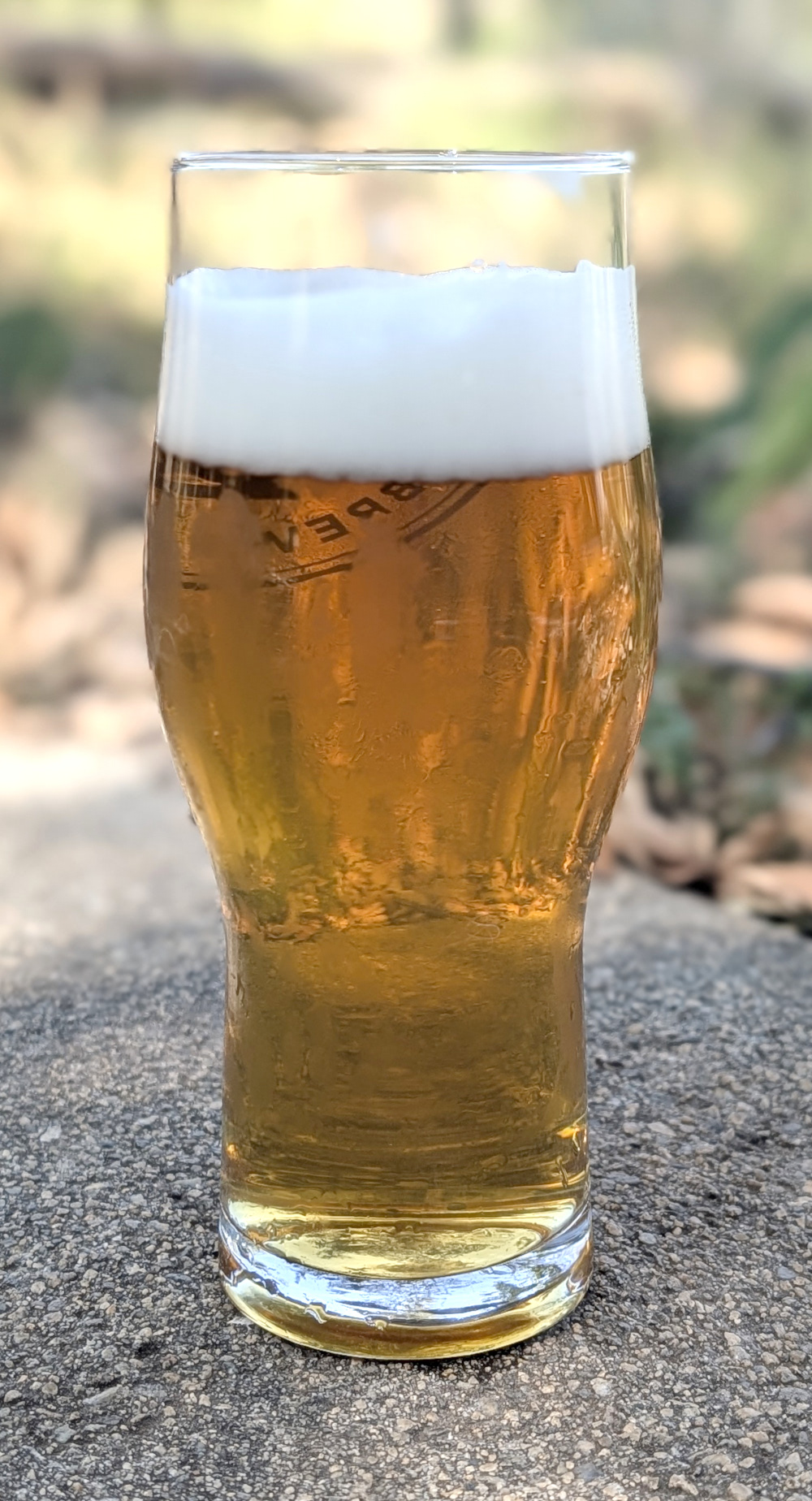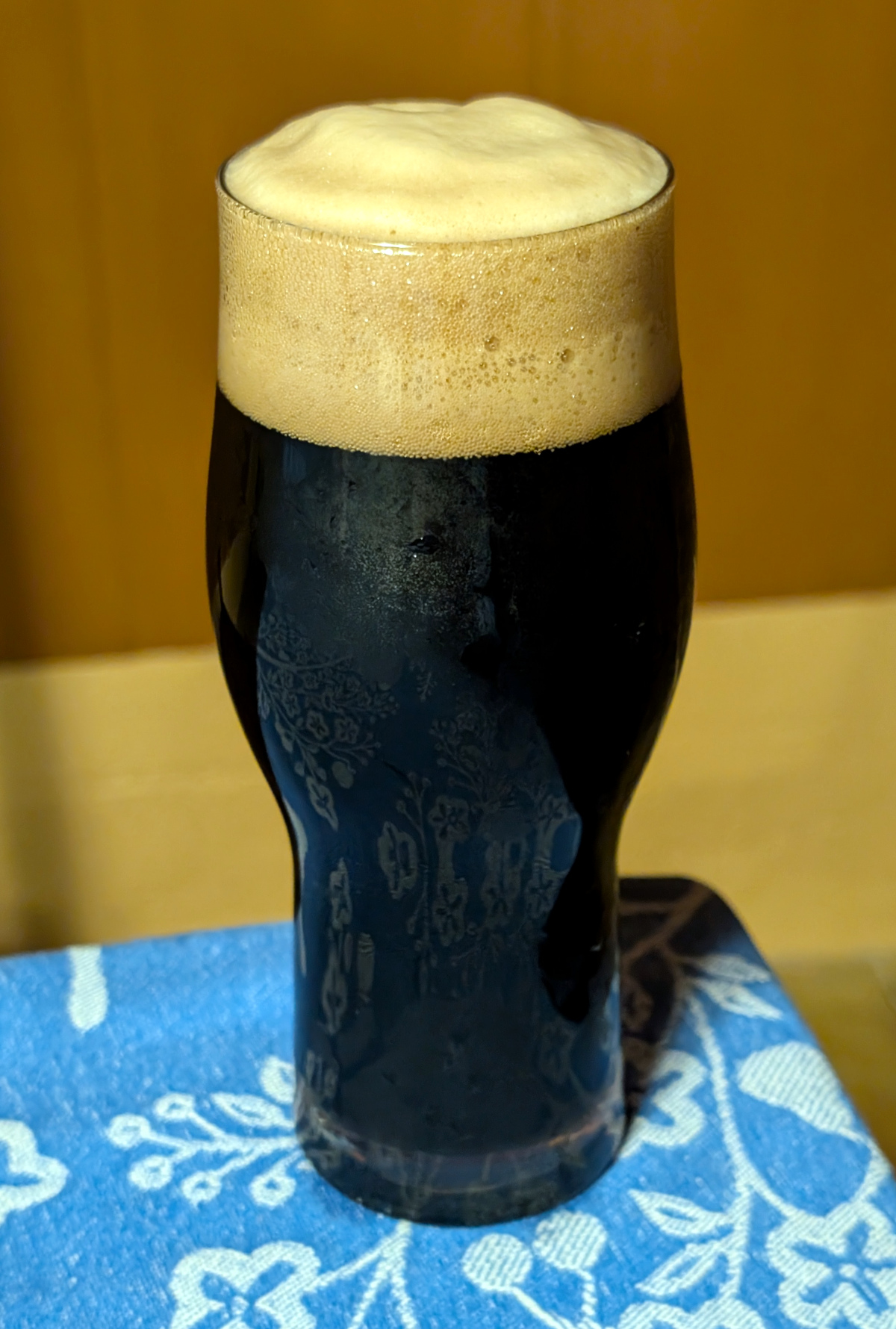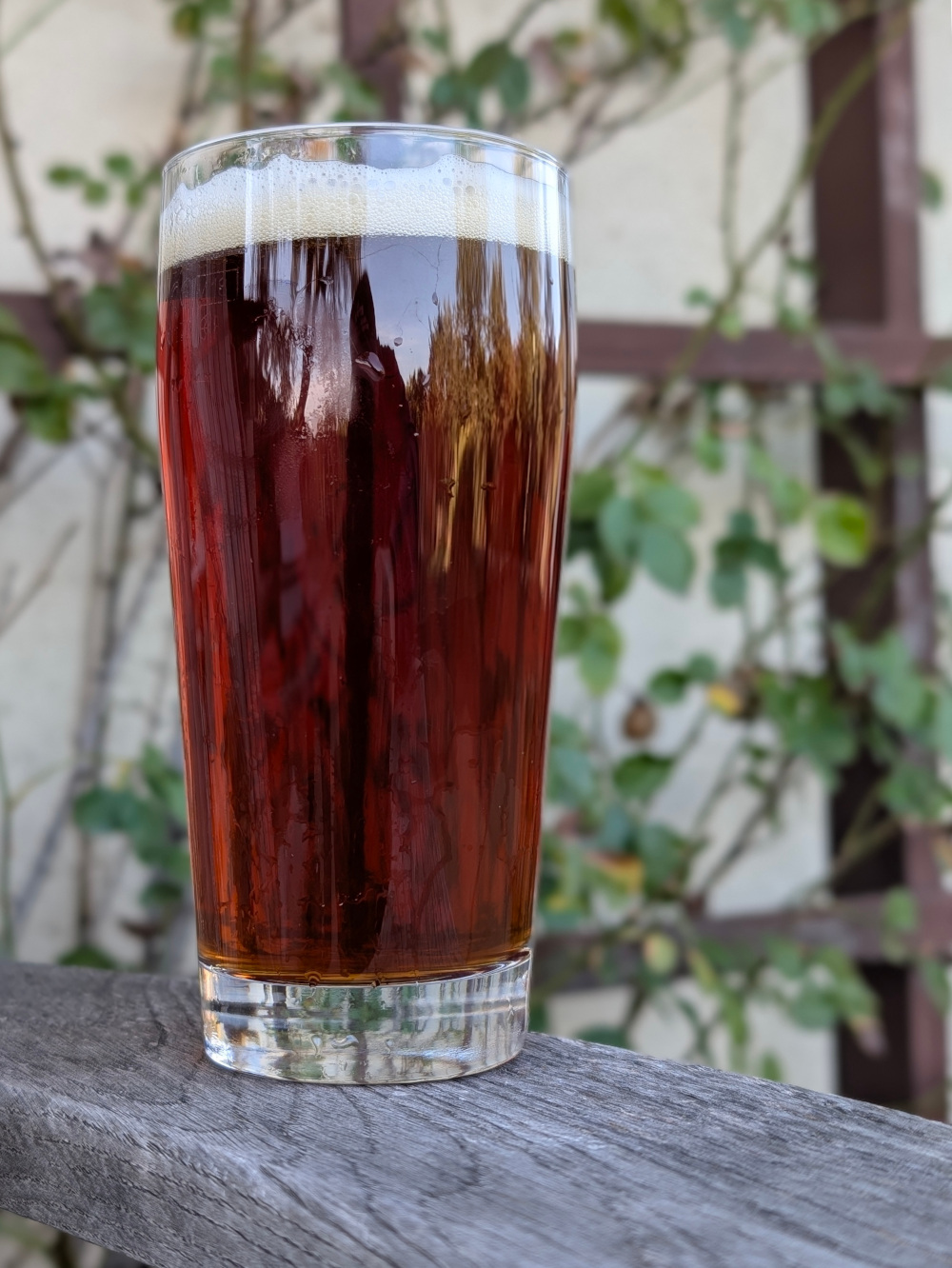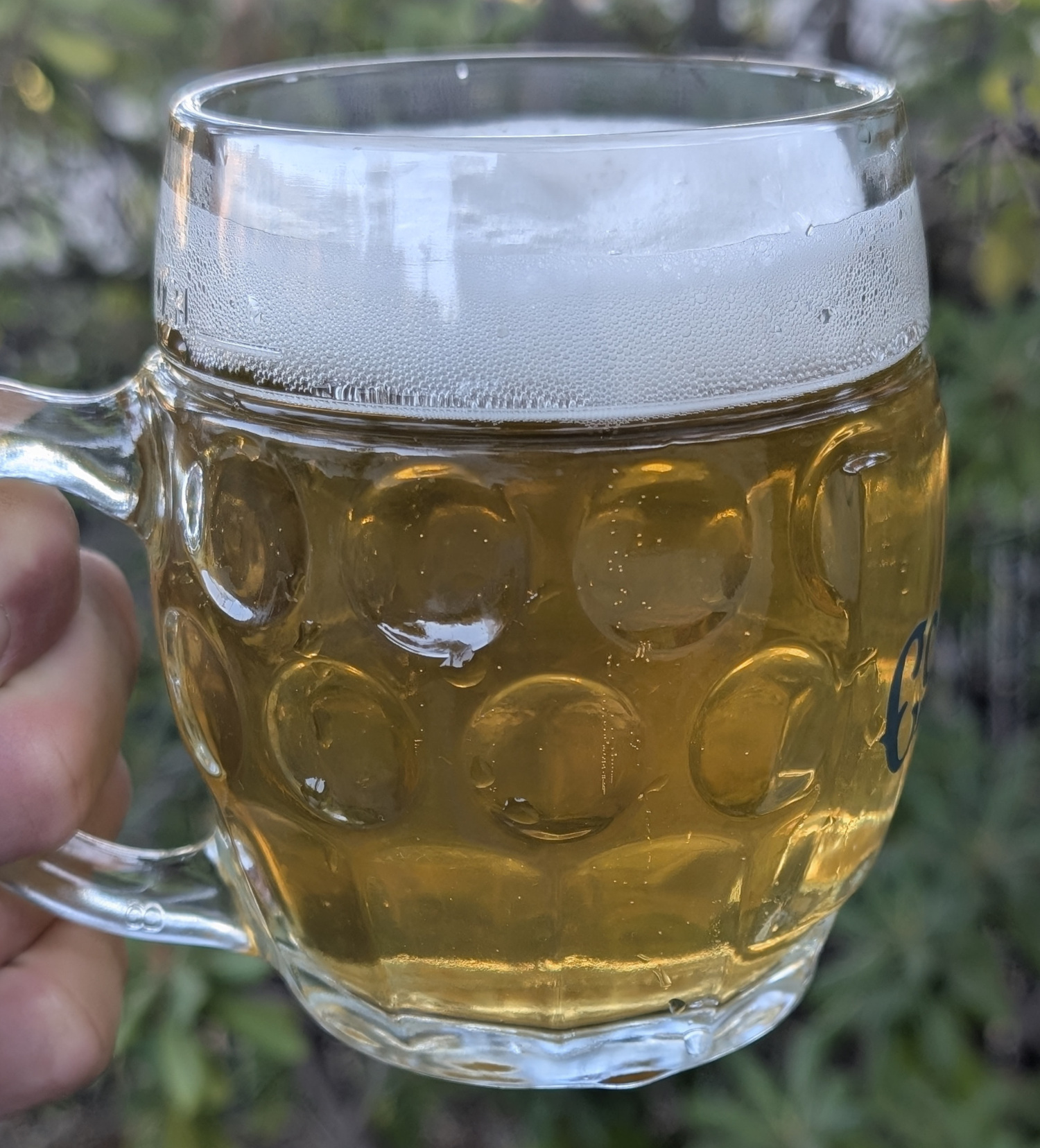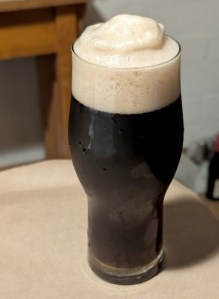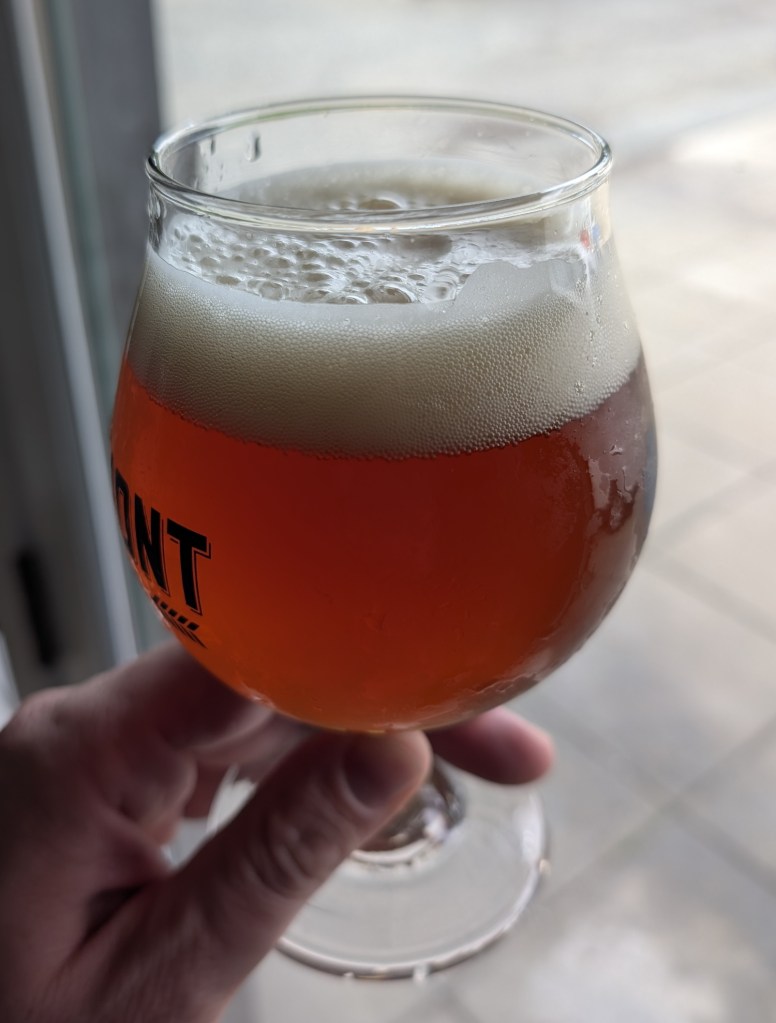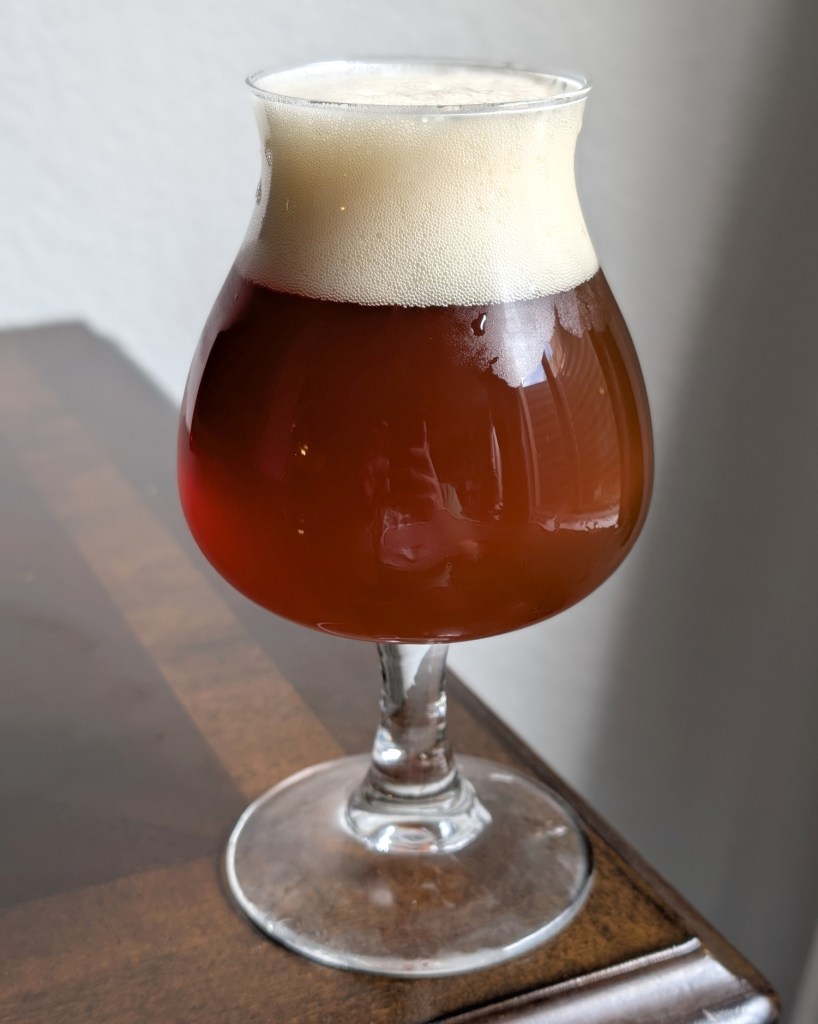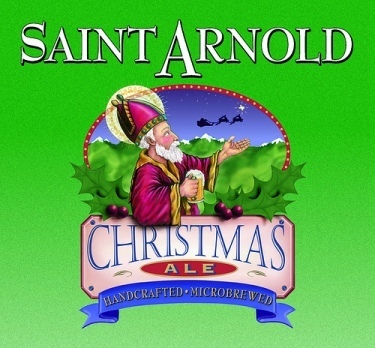
Early in November, I visited the St. Arnold Brewing Company taproom, where I sampled their newly tapped Christmas Ale. True to its reputation, this was a phenomenal beer, and I enjoyed sitting down with the BYO Big Book of Clone Recipes to compare with my perceptions from the actual beer. That evening, I decided my next batch would be a Christmas Ale clone, and I planned out the brew session while sipping the real thing.
The batch brewed here hews pretty closely to the published clone in the malt bill and bittering hops. However, I subbed in Hallertauer for Liberty hops at flameout and used WLP066 (London Fog) instead of Wyeast 1968 or WLP002. WLP066 and WLP002 are very different, but the purported citrus and tropical fruit characters for WLP066 seemed like a good match for a holiday ale. From perspective of convenience, WLP066 is available in dry form and I already had some on-hand, too.
Saint Arnold Christmas Ale (Homage)
- 6.25 lb. 2-row pale malt (Rahr)
- 11 oz. Caravienne malt
- 8 oz. Munich malt (BESTMALZ)
- 4 oz. Caramunich II malt (Weyermann)
- 4 oz. Special B malt (Dingemans)
- 0.25 tsp. BrewTanB, added to mash
- 0.75 oz. Perle hop pellets (6.3% alpha), 30 minute boil
- 1 Kick carrageenan tablet, 5 minute boil
- 0.25 tsp. yeast nutrient (White Labes WLN1000)
- 1.1 oz. Hallertauer hop pellets (3.0% alpha), 5 minute whirlpool
- 1 pkg. London Fog ale dry yeast (WLP066)
- 0.5 oz. BioFine Clear, added to keg
Target Parameters
- 75 minute infusion mash, 150°, full volume mash
- 1.066 o.g., 1.011 f.g., 7.3% abv, 24 IBU, 14 SRM
- Claremont tap water, neutralized with 88% lactic acid to remove bicarbonates.
- 2.75 gallon batch
Procedure
- I collected 4.3 gallons of tap water and added 4.4 mL of 88% lactic acid to knock out the carbonates. I heated this water to 156°, added the grains, and then held the mash at 150°, with recirculation, for 75 minutes. I added 2.7 mL of 88% lactic acid, to further adjust mash pH.
- After 75 minutes, I raised the temperature to 168° for a 10 minute mash out. Finally, I removed the grains and brought the runnings up to a boil.
- I collected 3.75 gallons of runnings at a gravity of 1.051, for 65% mash efficiency. I boiled the beer for 90 minutes, adding the hops and finings following the recipe. After the full boil, I added the whirlpool hops and recirculated for 5 minutes before chilling the rest of the way.
- I chilled the beer to 71°, pitched the yeast, and let it ferment at 72°.
- Starting gravity was 1.072; I brewed this beer on 9 November 2025.
- Vigorous fermentation had kicked off within 24 hours. I pulled the beer to ambient on 22 November 2025 and kegged it on 23 November 2025.
- Final gravity was 1.015, for 7.6% abv.
- As expected, the beer was pretty hazy — WLP066 is used for hazy IPA’s, after all! I added Biofine Clear on 30 November 2025, to fix this. I was rewarded with a wonderfully clear beer, as shown in the picture.
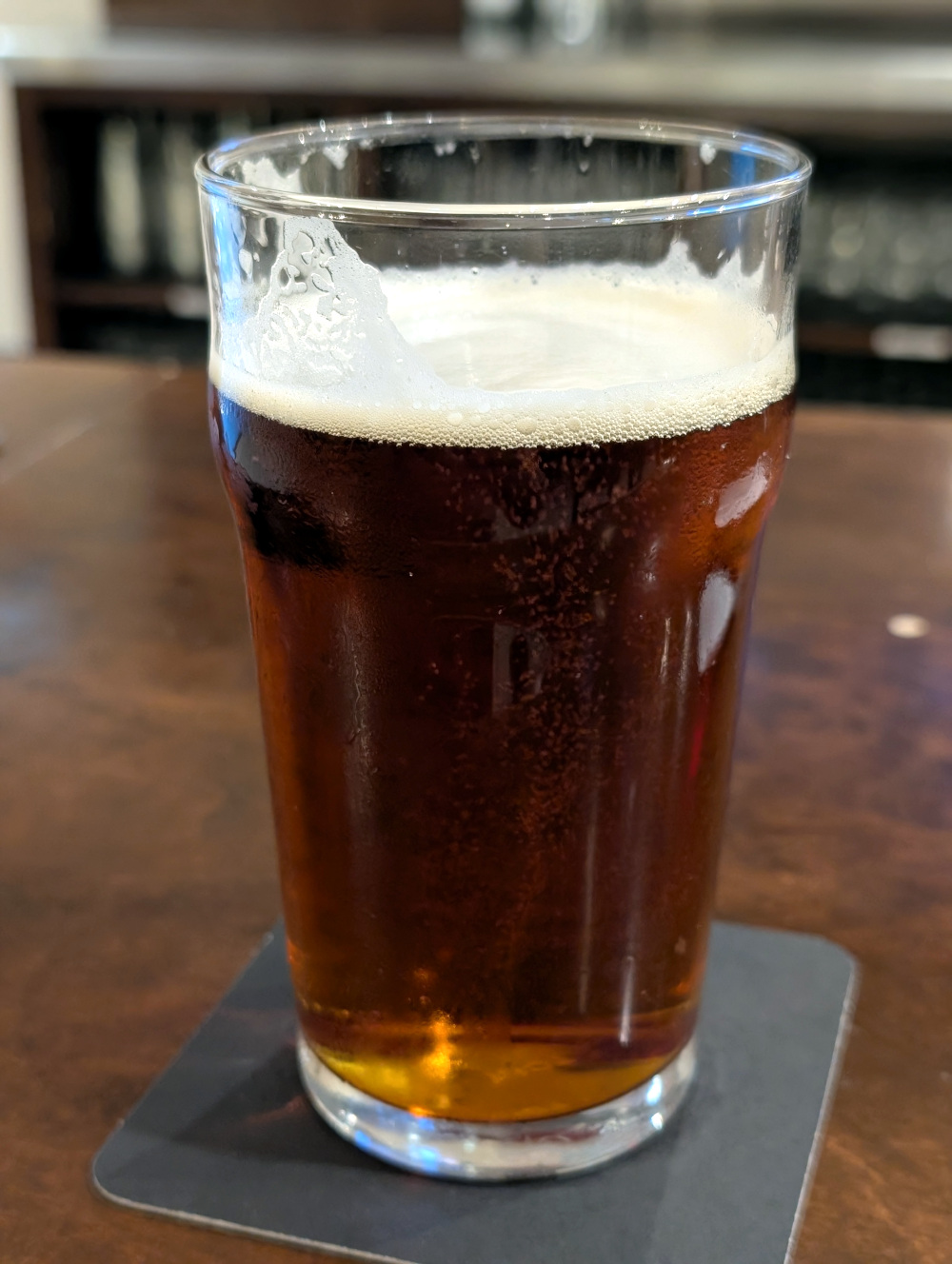
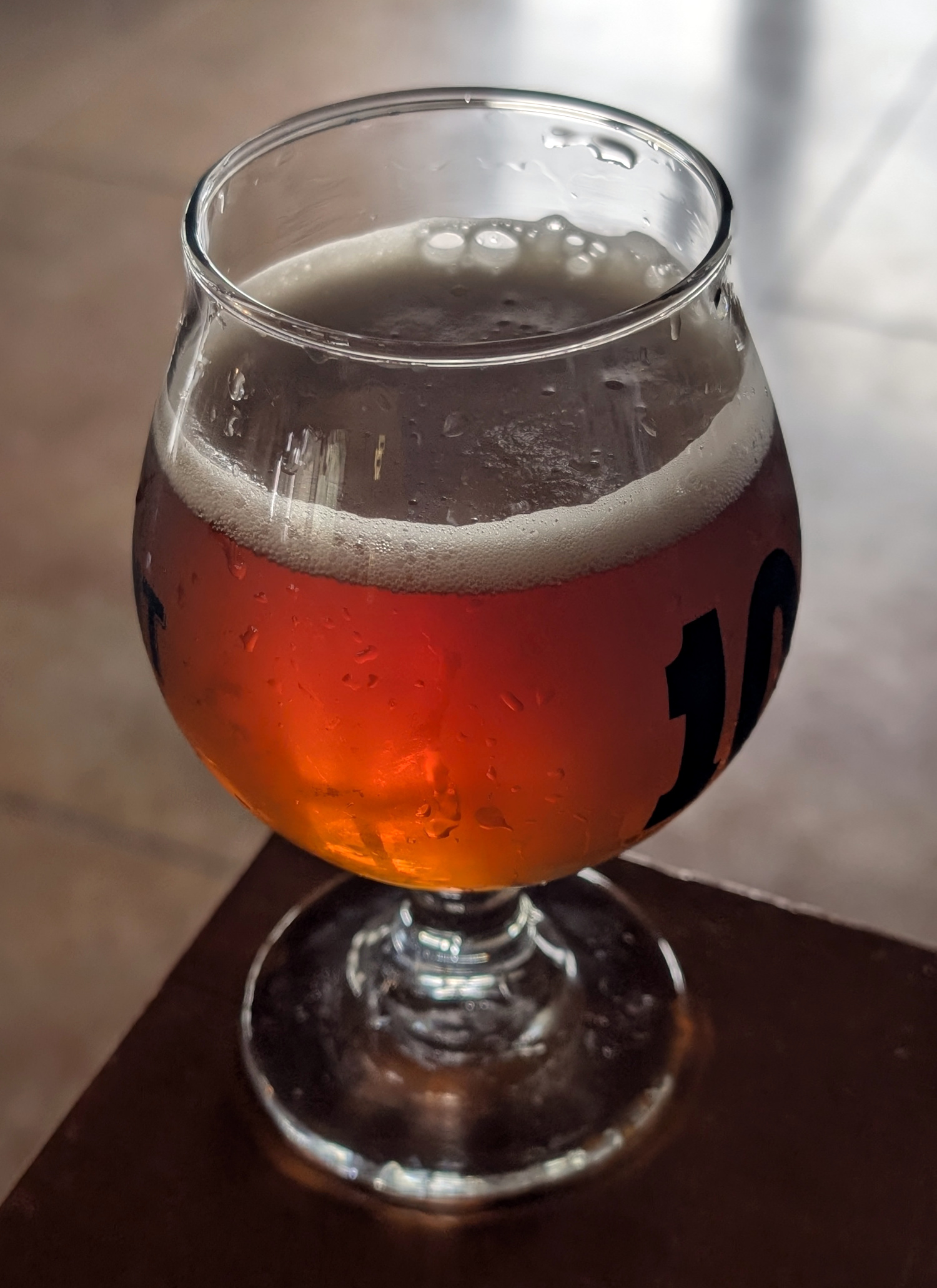
Left: the original St. Arnold’s Christmas Ale, at the brewery; right: my homebrew version
Tasting
- Appearance
- This beer pours with a persistent ivory head, and displays a beautifully clear amber orange color in the glass.
- Aroma
- Slightly herbal and spicy hop aroma, with a caramel malty aroma at a moderate level.
- Flavor
- Medium herbal bitterness in the hopping. Caramel and bready quality to the malt, at a medium-high level. Rich flavor!
- Mouthfeel
- This is a full-bodied beer, with a moderate level of carbonation. The finish is relatively smooth.
- Would I Brew This Again?
- This is a very drinkable and enjoyable holiday beer–pretty much exactly what I wanted. I don’t know how it stacks up as a clone (given I can’t do a side-by-side-tasting), but in any case the beer itself is super good. The flavors and body add up to a rich and flavorful beer. I also really like the concept of leaning on the base hops and malts to get the suggestion of holiday spices, versus actual spice additives. I’m a fan of this beer!
- Overall
- 10/10


